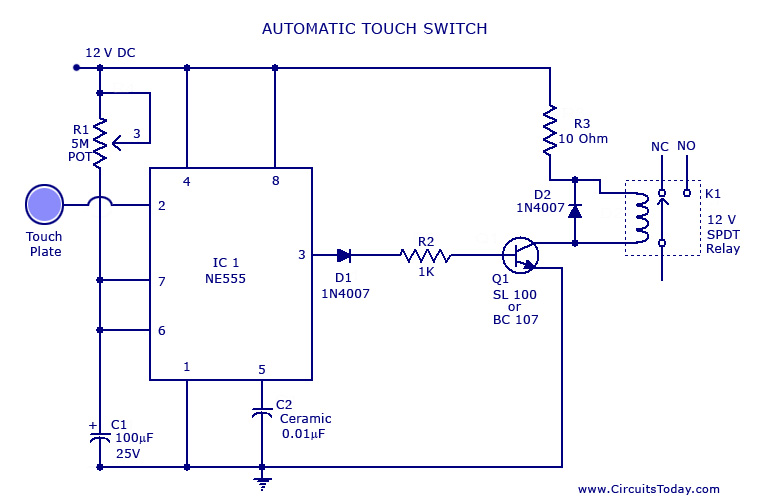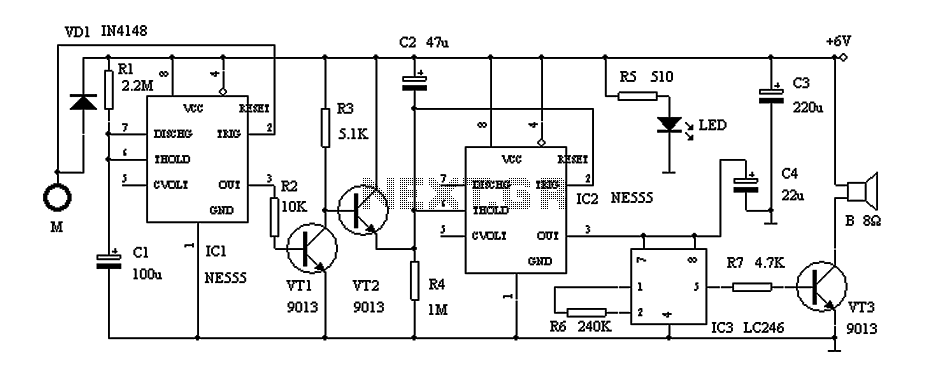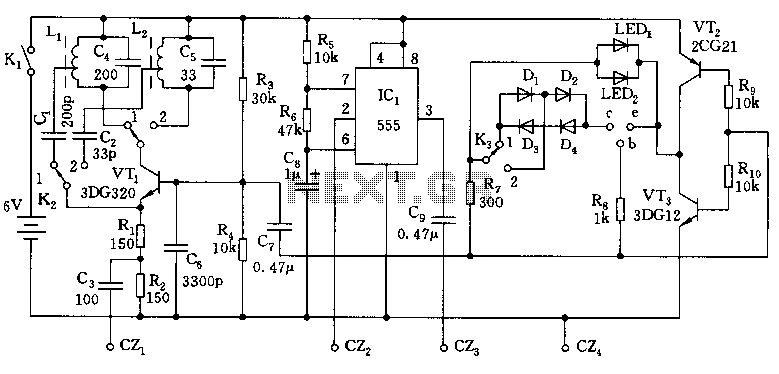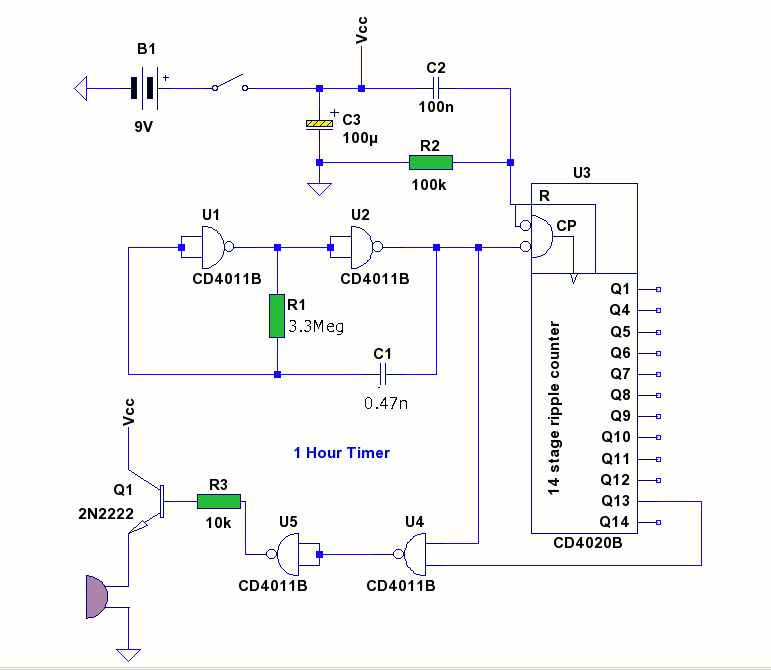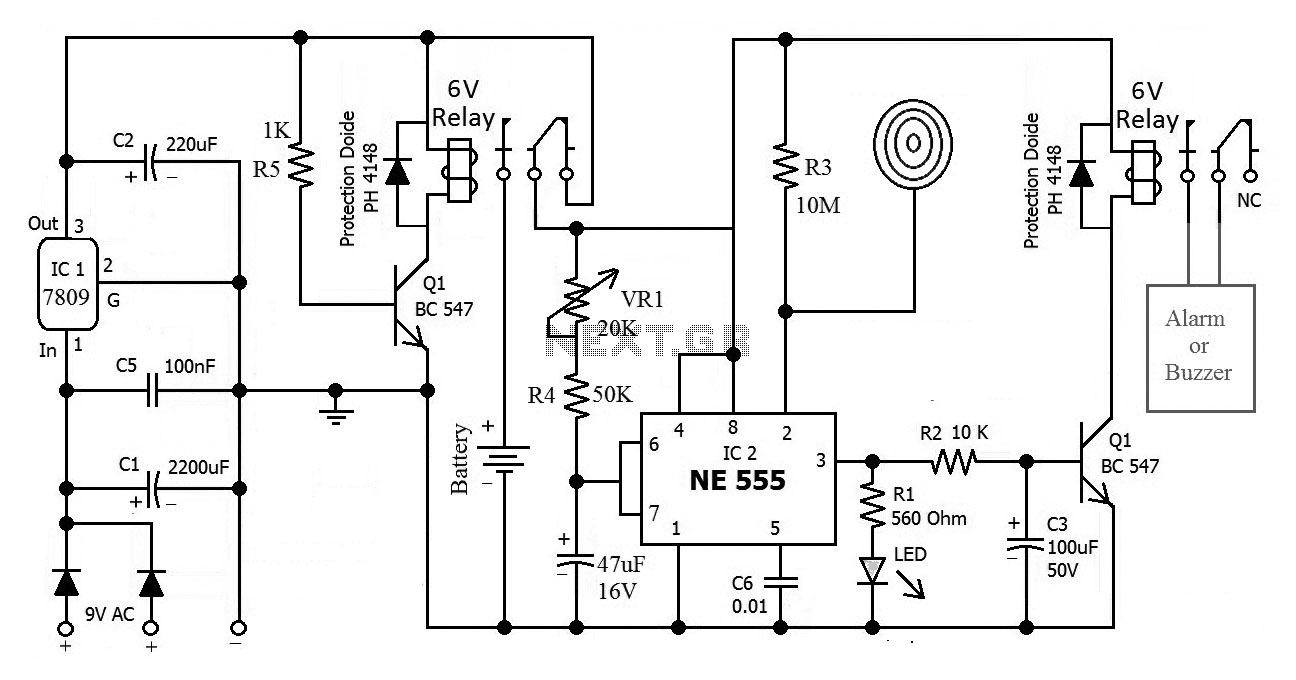
Build Your Own 555 Timer

The 555 timer is a highly versatile integrated circuit that has found applications in a wide range of devices, from toys to spacecraft. This chip can function as an oscillator, a Schmitt trigger, and more.
The 555 timer is a popular device in electronics due to its ability to operate in various modes, including astable, monostable, and bistable configurations. In the astable mode, the timer generates a continuous square wave output, making it suitable for clock pulses and tone generation. In monostable mode, it produces a single output pulse in response to a trigger signal, which can be used for timing applications such as delays or pulse width modulation. The bistable configuration allows the device to act as a flip-flop, maintaining its output state until triggered by an external signal.
The internal architecture of the 555 timer consists of two voltage comparators, a flip-flop, a discharge transistor, and a resistor divider network. The comparators compare the input voltage to preset reference levels, determining the state of the flip-flop. The discharge transistor is used to reset the timing capacitor in monostable mode, while the resistor divider sets the threshold and trigger levels for the comparators.
The versatility of the 555 timer is further enhanced by its ability to interface with various components such as resistors, capacitors, and diodes, allowing for customizable timing intervals and output characteristics. Its wide supply voltage range, typically from 4.5V to 15V, and low cost make it an ideal choice for both hobbyist projects and professional applications. The 555 timer continues to be a fundamental building block in electronic circuit design, demonstrating its enduring relevance in the field of electronics.The 555 timer. A chip so versatile that it has been used in everything from toys to spacecraft. A chip that can act as an oscillator, a schmitt trigge.. 🔗 External reference
The 555 timer is a popular device in electronics due to its ability to operate in various modes, including astable, monostable, and bistable configurations. In the astable mode, the timer generates a continuous square wave output, making it suitable for clock pulses and tone generation. In monostable mode, it produces a single output pulse in response to a trigger signal, which can be used for timing applications such as delays or pulse width modulation. The bistable configuration allows the device to act as a flip-flop, maintaining its output state until triggered by an external signal.
The internal architecture of the 555 timer consists of two voltage comparators, a flip-flop, a discharge transistor, and a resistor divider network. The comparators compare the input voltage to preset reference levels, determining the state of the flip-flop. The discharge transistor is used to reset the timing capacitor in monostable mode, while the resistor divider sets the threshold and trigger levels for the comparators.
The versatility of the 555 timer is further enhanced by its ability to interface with various components such as resistors, capacitors, and diodes, allowing for customizable timing intervals and output characteristics. Its wide supply voltage range, typically from 4.5V to 15V, and low cost make it an ideal choice for both hobbyist projects and professional applications. The 555 timer continues to be a fundamental building block in electronic circuit design, demonstrating its enduring relevance in the field of electronics.The 555 timer. A chip so versatile that it has been used in everything from toys to spacecraft. A chip that can act as an oscillator, a schmitt trigge.. 🔗 External reference
